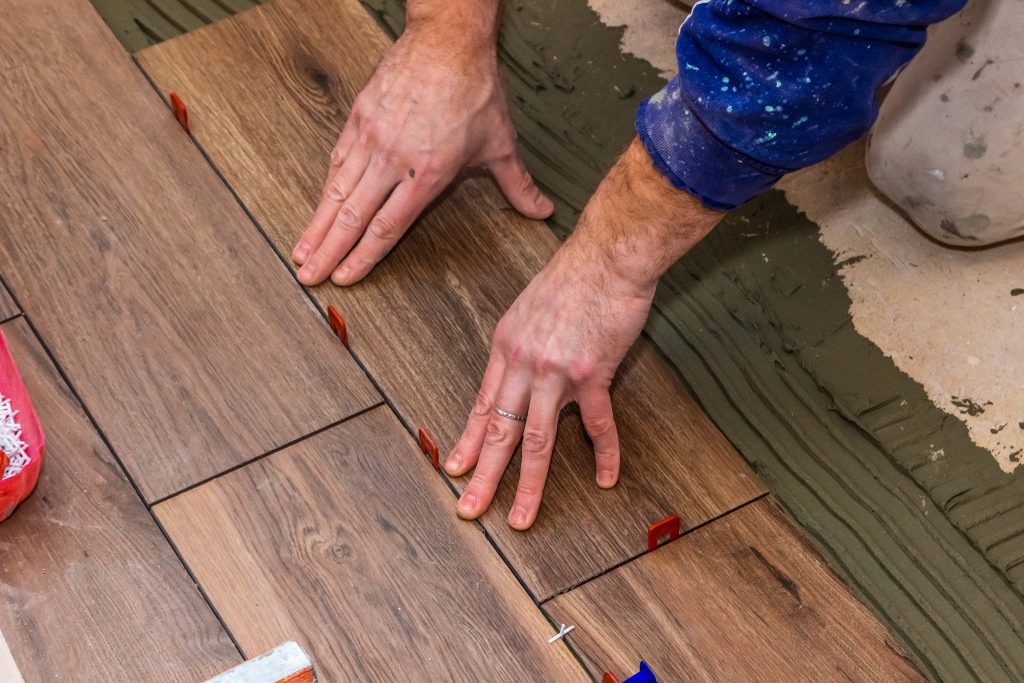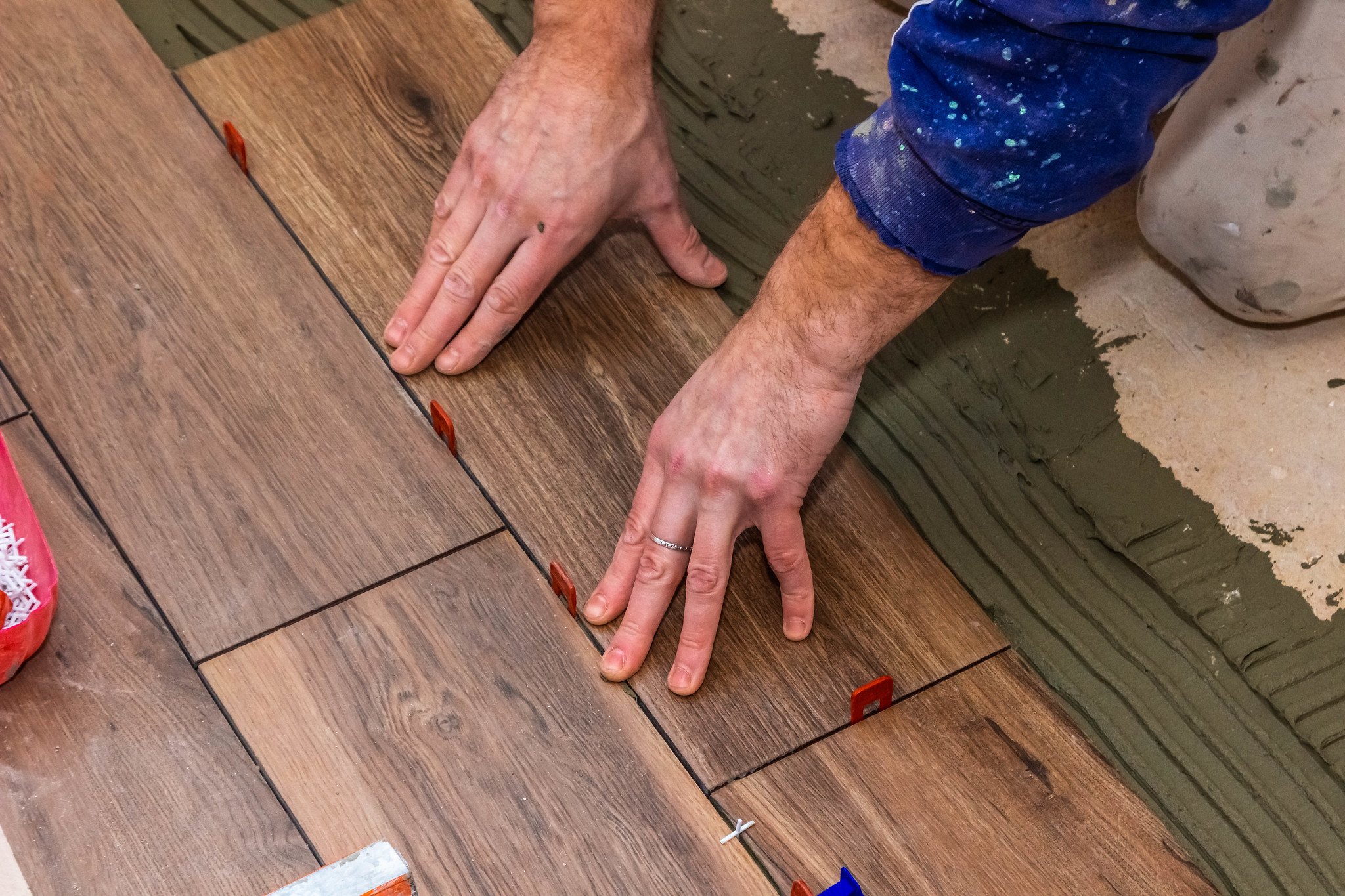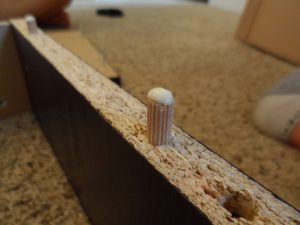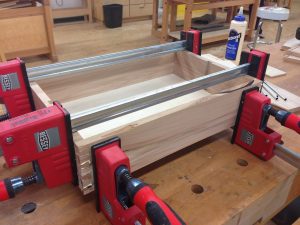Gluing is a common means of attaching pieces in pretty much any woodworking project. Whether you are building a jewelry box or a home, you’re probably going to end up using adhesives somewhere in the project. But just what’s the best glue to use? That depends a lot on the application. Different glues exist, because they each have certain characteristics. Which is best for you, will depend on what you’re trying to build.
There is no such thing as a universal wood glue, although PVA glues are what most people think of, when they think of wood glue. But even though it is widely considered a universal wood glue, there are times when PVA glues are not the thing to use. There are others where PVA might be the best adhesive to use, but the squeeze bottle it comes in isn’t the best dispenser for your project. Just as selecting the right type of glue is important, there are times when selecting the right means of dispensing will make a huge difference in your project.
Rarely are adhesives used alone in woodworking, unless we’re talking about model making. Typically, glues are used in conjunction with other fasteners, usually nails. But they can also be used in conjunction with screws. The nails or screws do three things for the glue joint, which the glue can’t do alone:
- Act as a clamp to hold the pieces together, while the glue is drying
- Close up gaps in the joint, so that the flue doesn’t have to fill those gaps
- Provide shear strength, especially against impact, where the glue alone might fail
Using adhesives together with these other fasteners allows for quick, secure construction, without the need to leave a project clamped while waiting for the glue to dry. However, you can’t use this sort of combination in all cases. As one example, laminating pieces of wood together to make a tabletop is done with glue only and without any other fasteners, unless they are dowels or biscuits.
In most cases, the actual strength of the glue (usually expressed as “tensile strength”) is not much of an issue, as the adhesives are almost always stronger than the wood fibers they are bonding together. If a joint breaks, it will probably be the wood that is breaking and not the glue joint itself.
The Seven Types of Wood Glues
We can break down all wood glues into five basic categories. Within those categories there are likely to be several different brands to choose from. I’m not going to bother telling you that one brand is better than another; because that’s mostly personal opinion. Rather, we’re going to focus on the differences between different brands.
PVA Glue
Polyvinyl acetate is what most of us think of, when we hear the term “wood glue.” This is the yellow wood glue you can find just about anywhere. White glue, of the kind that children use for their art projects, is also a PVA glue. The basic difference between the two, besides the obvious difference in color, is that PVA wood glue is thicker than white glue.
Yellow PVA glue for woodworking also dries harder and more brittle than white PVA glues does. This makes it easier to remove excess glue with a chisel, as the glue will crack and chip out, usually leaving a clean edge at the surface of the seam. However, the glue does soak into the pores of the wood, so if you do have glue that seeps out of the seam, it may stain the adjacent surface, sealing the pores and preventing that surface from accepting stains and leaving a mark on the finished piece.
One way of solving this problem is to use less glue. Another is to stain, or even stain and varnish, the wood pieces, before connecting them together. It really depends on what you are trying to do with the project. In the case of a butcher block tabletop, where you will have to be planning and sanding the surface, it probably doesn’t matter if there’s any squirt-out staining the surface, as you will probably be cutting off enough of the surface to get below that point.
PVA wood glue is generally considered to be waterproof, although not all PVA glues are. It is an excellent choice for attaching pieces of cabinetry and other small woodworking projects together. It can fill gaps up to about 1/16” wide.
Polyurethane Glue
Polyurethane glue differs from PVA glue in chemical composition, but also in use. These glues are activated by water; so you need to wet both surfaces, before applying the glue and putting the pieces together. The glue expands as it cures, so it is excellent for use in cases where gap filling is a must. It is also excellent for use when other types of material must be bonded together with the wood.
The expansion of polyurethane glue can be problematic for finishes, as it will most likely squeeze out of the seam, onto the wood’s surface. Cleanup can be accomplished with mineral spirits, but you may not get all the adhesive off. On the plus side, polyurethane glue is highly waterproof, once cured. So it is an ideal choice where it will not affect the finish (such as when being painted) and waterproofing is needed.
Construction Adhesive
Construction adhesives, often sold in caulking tubes, are actually stronger than either of the two glues I just mentioned. But they are designed to be used differently and for different purposes. It really wouldn’t be practical to put wood furniture or cabinets together with construction adhesive.
Compared to all the other adhesives we are looking at, construction adhesives are much heavier-bodied and don’t flow as well. That’s intentional, as they are gap-filling adhesives. They are intended for use in cases where adjacent pieces of structural lumber may not fit tightly together or where plywood products being attached to a structure may not fit tightly. However, even though it works for gap filling, there is a limit.
Construction adhesives will remain somewhat flexible, but heat and time eventually cause them to harden. In those cases, the glue can fracture and fall out of the gaps, leaving you with little holding the pieces together.
Epoxy
Epoxy is a two-part adhesives which is known for its high strength. It is also known for its gap-filling capability, something that most other glues struggle with. Conversely, you won’t get a very strong joint using epoxy, when the parts fit tightly together, with minimal gap.
We are finding epoxy used more today as a finish and filler, than as an actual adhesive, even though it is an excellent adhesive. Live-edge river countertops and table are made using epoxy for the “water” in the river. It is also used extensively for filling cracks and checks in wood slabs, often with pigmentation added to provide a contrast with the wood being repaired.
Epoxy is highly waterproof, making it excellent for marine applications or other places where the project will be exposed to a lot of water. When used as a finish, epoxy coated wood projects can withstand being submerged in water for a prolonged period of time, just as long as there are no gaps or pinholes in the finish. It also works very well for a high-build finish, because of the high solids content in the adhesive.
Cyanaocryate Glue
Cyanoacrylate glues, more commonly known by the trade name “super glue” are a thin-bodied, very hard adhesive, which sets almost instantly. This makes it extremely useful for gluing small parts together, especially in cases where it might be difficult to clamp the pieces while the glue sets. This makes it ideal for model building, but it is also used for making wood-bodied instruments, such as guitars.
Surprisingly, cyanoacrylate glues can also be used as a finish. They provide a very hard protective coating, which is impervious to water. Because the glue has a very thin viscosity, it fills the pores of wood extremely well, helping to seal it.
This ability to seep into pores easily is a very important part of how these adhesives work. As such, they will not work effectively in cases where they don’t have pores to seep into. If you try using cyanoacrylate glues on an already varnished piece of wood, you will have trouble getting anything to bond to it.
Hot Melt Glue
Hot melt glue is used for a variety of industrial applications, as well as for craft projects. But it can also be used for woodworking. Because hot melt glue is heated to liquefy it, it hardens as fast as it cools, making it bond pieces together very quickly. However, the glue does need some space, so it is not ideal when you have tight-fitting pieces. Rather, you actually want a gap for the glue to fill.
There are a wide variety of hot melt glues made specifically for woodworking, so that they can meet the various different needs of different types of projects and different woods. Some hot melt glue sticks are tinted, allowing them to match wood tones to some extent.
Hide Glue
Before there were any of the other adhesives we’ve talked about above, there was hide glue. Typically, when we talk about hide glue, we’re talking about horse hide; but any animal hide can do. The glue uses the collagen protein in the hide to bond wood together.
If you are restoring antique furniture, you will most likely be encountering hide glue. This tends to become dry and brittle over time. Flexing of furniture, especially at the joints, can cause hide glues to crack and chip, with pieces falling out of the joint, loosening it even further. When repairing this furniture, you will find the joints coated with remainders of the glue.
One advantage of working with hide glue is that you don’t need to remove these remainders to repair the joint. New hide glue added to the joint will bond with the existing glue, making a strong joint. This is the only kind of wood glue which will do this, making it a very valuable glue to have available to us.
Hide glue can also be squirted into wood joints, such as a mortise and tenon joint which has become loose. To repair such joints, a small hole is drilled and a syringe with an unsharpened needle is used to squirt glue into the joint. Since it mixes with and bonds with the existing hide glue, it will revitalize the existing glue, as well as replacing what has worn away, making the joint as good as new.
Today, hide glues can be found in either a cold version that comes in a bottle and is used much like other glues, or a hot version that is used in a glue pot.

Glue Application
Choosing the right glue is only part of the battle; a much ignored part is choosing the right way to apply the glue. Many of us use the glue in whatever bottle it comes in, as if the applicator top on the bottle is the only way that the glue can be applied. But that isn’t true.
In addition to the applicator that is installed on the glue bottle, there are applicator bottles that are available for use with any type of liquid glue. These generally have a better applicator, giving you better control in how much glue comes out and where it goes.
One of my favorites is to use a small squeeze bottle with an unground needle from a syringe. These are used fairly often in manufacturing, but for some reason haven’t really made their way into woodworking all that much. But they give you very precise application of adhesives. I like them because I do a lot of projects with small pieces, where I only need a minimal amount of glue. These help me to ensure that I don’t apply too much adhesive.
Glue can also be applied with a brush. Hot hide glue is often applied this way, when working from a glue pot. But any of the other adhesives we’ve mentioned can be applied with a brush as well. PVS adhesive, for example, can be spread with a brush when laminating wood pieces together. Epoxy is often applied with a brush as well, so as to cover the mating surfaces entirely.
Regardless of whatever application method you choose, always be cognizant of adjacent surfaces and what sort of finish you will be applying. Most of these adhesives will make it difficult to properly stain the wood and may even cause discoloration with varnish. Proper control of adhesive application will help prevent any problems with finishing your project.




